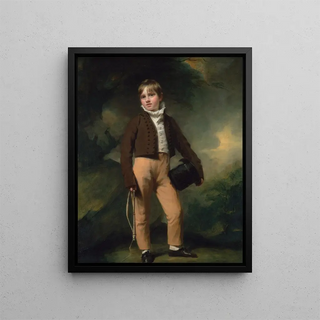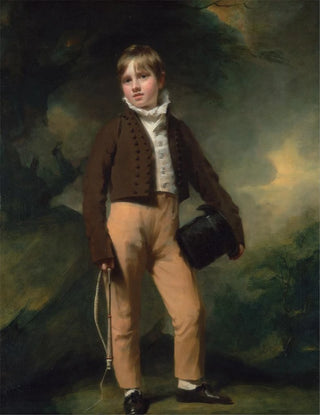Art print | Quentin McAdam - Sir Henry Raeburn


View from behind

Frame (optional)
Quentin McAdam art print - Sir Henry Raeburn – Captivating introduction
The Quentin McAdam art print - Sir Henry Raeburn evokes a moment of timeless beauty, a bridge between the past and the present. As viewers contemplate this piece, they are transported to early 19th-century Scotland, a time when art and culture flourished under the influence of the Enlightenment. The painting, which pays tribute to Sir Henry Raeburn, a renowned portraitist of his era, invites reflection on identity, power, and social representation. The mastery of colors and lights, along with the finesse of details, makes this work a true masterpiece that captures the very essence of its subject.
Style and uniqueness of the work
The style of the Quentin McAdam art print - Sir Henry Raeburn is distinguished by a realistic and emotive approach, characteristic of Raeburn's work. The portraits he created are often marked by psychological depth, a capacity to grasp the soul of his subjects. In this piece, the choice of warm colors and delicate shadows creates an intimate atmosphere, where each brushstroke seems to tell a story. The sumptuous clothing of the character, as well as the carefully crafted background, reinforce the idea of status and dignity. McAdam, in paying homage to Raeburn, does not merely reproduce an image, but also captures the spirit of the era, offering an enriching and nuanced vision of the human condition.
The artist and his influence
Sir Henry Raeburn, born in 1756, is often regarded as one of the greatest Scottish portraitists. His influence extends well beyond Scotland's borders, touching generations of artists worldwide. Raeburn managed to blend neoclassical style with romantic sensitivity, creating works that still resonate today. His ability to portray the personality of his models, whether noble or common citizens, helped redefine portraiture in the 18th century. Inspired by his work, Quentin McAdam does not just reproduce a portrait; he participates in an artistic dialogue that transcends time, paying homage to a tradition while bringing his own vision.
A wall decoration

Matte finish

View from behind

Frame (optional)
Quentin McAdam art print - Sir Henry Raeburn – Captivating introduction
The Quentin McAdam art print - Sir Henry Raeburn evokes a moment of timeless beauty, a bridge between the past and the present. As viewers contemplate this piece, they are transported to early 19th-century Scotland, a time when art and culture flourished under the influence of the Enlightenment. The painting, which pays tribute to Sir Henry Raeburn, a renowned portraitist of his era, invites reflection on identity, power, and social representation. The mastery of colors and lights, along with the finesse of details, makes this work a true masterpiece that captures the very essence of its subject.
Style and uniqueness of the work
The style of the Quentin McAdam art print - Sir Henry Raeburn is distinguished by a realistic and emotive approach, characteristic of Raeburn's work. The portraits he created are often marked by psychological depth, a capacity to grasp the soul of his subjects. In this piece, the choice of warm colors and delicate shadows creates an intimate atmosphere, where each brushstroke seems to tell a story. The sumptuous clothing of the character, as well as the carefully crafted background, reinforce the idea of status and dignity. McAdam, in paying homage to Raeburn, does not merely reproduce an image, but also captures the spirit of the era, offering an enriching and nuanced vision of the human condition.
The artist and his influence
Sir Henry Raeburn, born in 1756, is often regarded as one of the greatest Scottish portraitists. His influence extends well beyond Scotland's borders, touching generations of artists worldwide. Raeburn managed to blend neoclassical style with romantic sensitivity, creating works that still resonate today. His ability to portray the personality of his models, whether noble or common citizens, helped redefine portraiture in the 18th century. Inspired by his work, Quentin McAdam does not just reproduce a portrait; he participates in an artistic dialogue that transcends time, paying homage to a tradition while bringing his own vision.
A wall decoration






